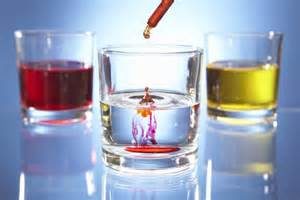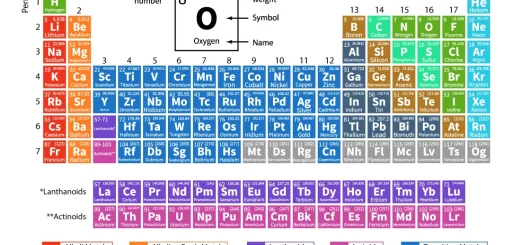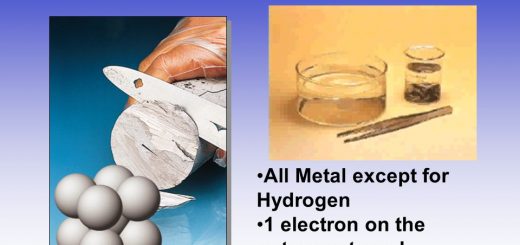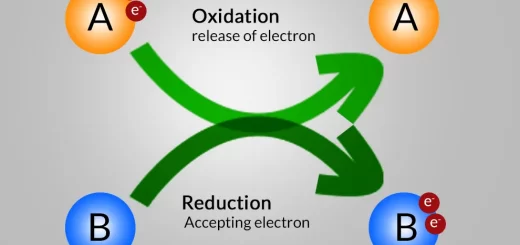Chemical equation & Ionic equation for some physical processes and chemical reactions
Chemical equation
It is a group of chemical symbols and formulas of the reactants and products which are connected by an arrow that expresses the direction of this reaction and carries its conditions , It must be balanced where the numbers of atoms ( or ions ) are the same in both sides to achieve the law of mass conservation .
The chemical experiments are carried out in laboratories under certain conditions, tools,…. etc, such these experiments and reactions can be expressed by words or symbols as the following reaction between magnesium and oxygen ( magnesium combustion ).
Oxygen + Magnesium → Magnesium oxide
O2 + 2Mg → 2MgO
The chemical equation describes each of the reactants and the products accurately according to the chemical symbols and molecular formulas , the quantity and the physical state .
The chemical symbols and the molecular formulas shows the kind , the number or the ratio of the elements that are forming the chemical substances .
The quantity: We can say in a quantitative manner that every 2 moles of solid magnesium will react with 1 mole of oxygen gas to produce 2 moles of solid magnesium oxide.
The physical state: The chemical equation shows the symbols that are used to express the physical states of the reactants and products and it is written at the bottom right of the chemical symbol.
2 H2 (g) + O2 (g) → 2 H2O (l)
Ionic equation
Ionic equation is the chemical equation in which some or all reactants and products are written in the form of ions , It is used to express some physical processes and some chemical reactions .
The ionic equation for some physical processes
Dissociation of some ionic compounds into ions when they are melted and dissolved in the water , such as dissolving of sodium chloride salt in the water can be expressed by the following ionic equation :
NaCl (s) → Na+ (aq) + Cl− (aq)
The ionic equation for some chemical reactions
Neutralization reactions
The reaction of acid and base to form salt and water is called Neutralization reaction because the properties of acid and base disappear when they react together .
Sulphuric acid and sodium hydroxide is represented by the following symbolic equation .
H2SO4 (aq) + 2NaOH (aq) → 2 H2O (l) + Na2SO4 (aq)
But , does this equation represent the real form of the substances in the aqueous solution ?
Many substances such as ( acids – bases – salts ) are ionized in the water , So , the equation should be written as the following :
2H+(aq) + SO42-(aq) + 2Na+(aq) + 2OH−(aq) →2 H2O (l) + 2 Na+(aq) + SO42-(aq)
From the previous equation :
The sodium ions Na+(aq) and sulphate ions SO42-(aq) remained free and did not participate in the reaction , So , they can be cancelled from the both sides of the equation , So , the ionic equation of this reaction will be written as :
2H+(aq) + 2OH−(aq) → 2H2O (l)
The ionic equation of any neutralization reaction will be :
H+(aq) + OH−(aq) → H2O (l)
The reaction of Hydrochloric acid HCl(aq) and hydroxide solution NaOH(aq)
HCl (aq) + NaOH (aq) → H2O (l) + NaCl (aq)
The complete ionic reaction
Cl−(aq) + H+(aq) + Na+(aq) + OH− (aq) → Na+(aq) + Cl−(aq) + H2O (l)
The Na+(aq) and Cl−(aq) ions are spectator ions , so you can remove them to have
H+(aq) + OH−(aq) → H2O(l)
In such these neutralization reactions , The water is not found in the form of ions , but in the form of molecules .
Precipitation reactions
Chemical reactions that occur between aqueous solutions of two different ( soluble ) salts and give ( produce ) solid salts insoluble in water ( precipitates ) are called Precipitation reactions .
On adding potassium chromate solution to silver nitrate solution, a red precipitate of silver chromate is formed which is insoluble in the water .
2AgNO3 (aq) + K2CrO4 (aq) → Ag2CrO4 (s) + 2KNO3 (aq) ↓
Wgere , 2KNO3 (aq) is ( red precipitate )The equation should be written as the following ionic form :
2Ag+ (aq) + 2NO3−(aq) + 2K+ (aq) +Cr O42-(aq) → Ag2CrO4 (s) ↓ + 2K+ (aq) + 2NO3−(aq)
From the previous equation :
K+ (aq) and NO3−(aq) ions remained free and did not participate in the chemical reaction , so , they can be cancelled from the both sides of the equation to obtain the following ionic equation :
2Ag+(aq) + Cr O42-(aq) → Ag2CrO4 (s) ↓
The sum of charges on the left side = zero2Ag+(aq) + Cr O42-(aq) = [( 2 * (+1 )]+ ( – 2) = zero
The sum of charges on the right side ( Ag2CrO4 ) = zero
So , The ionic equation must be balanced where the sum of positive and negative charges is the same in both sides , The number of atoms of each element is the same in both sides .
Ex : the ionic equation for the precipitation reaction
Na2S (aq) + Hg( NO3)2 (aq) → HgS (s) + 2NaNO3 (aq) ↓
Hg2+ (aq) + 2NO3−(aq) + 2Na+ (aq) + S2-(aq) → HgS (s) + 2Na+ (aq) + 2NO3−(aq)
Hg2+ (aq) + S2-(aq) → HgS (s)
Balanced chemical equations, Law of conservation of matter (mass) & Law of constant ratios




